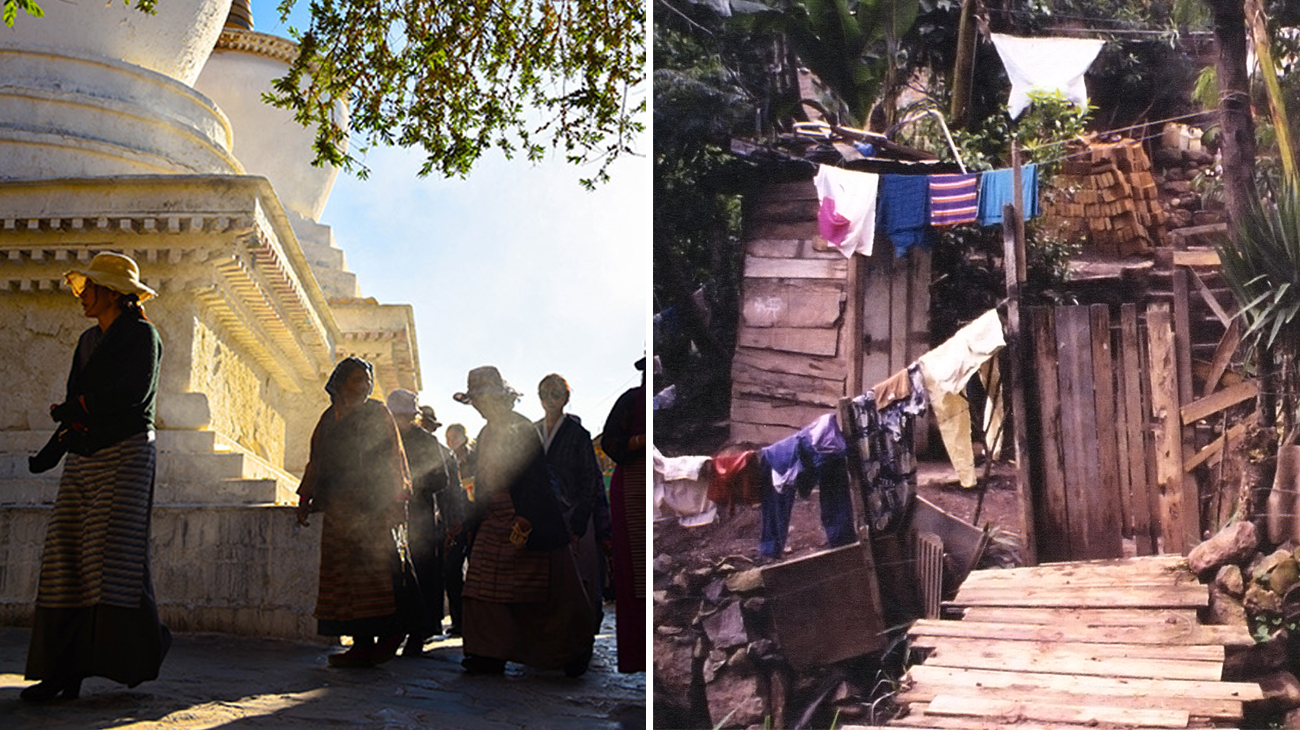Potable water and local power struggles in Honduras
Timothy Kohut reflects on alternative visions for community development in Tegucigalpa.
[L] Path to Jokhang Monastery of Lhasa, Tibet. Credit: Xiao Huya. [R] Informal housing in Honduras. Credit: Timothy Kohut.
The Deborah J. Norden Fund, a program of The Architectural League of New York, was established in 1995 in memory of architect and arts administrator Deborah Norden. The competition awards up to $5,000 annually in travel grants to students and recent graduates in the fields of architecture, architectural history, and urban studies.
In 1995, the Architectural League awarded two grants: one to Timothy Kohut for “Relationship of Architecture and Community-Building in Tegulcigalpa, Honduras” and another to Amar Sen and Ehrmei Yuan for “The Path to the Center in Tibetan Architecture.”
With the support of the Norden Fund, Timothy Kohut traveled to Honduras in search for alternative visions of community development. His study examined a residential mobilization which occurred when a major development institution attempted to construct a water system in one Tegucigalpa community. Beyond the understanding of this particular case, it intended to “assess and impact planning, policy, and practice in approaching participation in large-scale community improvement projects.”
Timothy Kohut is currently an architect and senior strategist at Collaborative Project Consulting, a district strategist for the 2030 District of Los Angeles, and a lecturer at the University of Southern California. Kohut has presented nationally on green building, conducted workshops for Greenbuild, the Los Angeles Chapter of the US Green Building Council and the Southern California Association for Nonprofit Housing (SCANPH), and presented for classes at UCLA, USC, and Cal Poly Pomona. Prior to joining Collaborative Project Consulting, Kohut was vice president and director of architecture for Abode Communities, where he was involved in the design and construction of nearly 1,000 units of affordable housing.
The notion of the center in Tibetan society can be defined as “an ever-changing focal point continually approached during the daily meditative sequence of a Buddhist.” Departing from the idea that “a notion of center is a fundamental inherent in every society,” Amar Sen and Ehrmei Yuan travelled to Lhasa and Shigatse in Tibet to study the particularity of its notion of center, which is “experienced by a sequence of three concentric paths,” contrary to in the west, where it is approached axially. The study of this unique spatial relationship between paths and center exposes a different set of fundamentals.
Amar Sen has been at Handel Architects in New York, where he has completed several large projects in Washington DC and is currently working on the Residences at the Ritz-Carlton in Philadelphia. Ehrmei Yuan has worked for Kohn Pederson Fox and is currently producing marketing materials for major developers across the United States. Erhmei and Amar have been sponsored by New York Foundation for the Arts to continue their investigation into their interest in Tibetan architecture whenever possible, and have named their two-year-old daughter Kora–the Tibetan word for “Path Around a Spiritual Center.”
The League talks with a co-founder of Little Free Library, LTD about the origins of the idea and how it grew into an international movement.
Bernard Tschumi’s Current Work lecture details his design for the 2014 retrospective of his practice at the Centre Pompidou.
Jeff Geisinger investigates the built environment's impact on social capital in Colombia's second-largest city.
